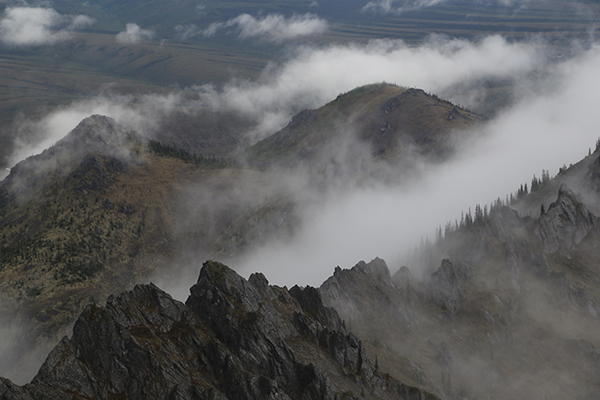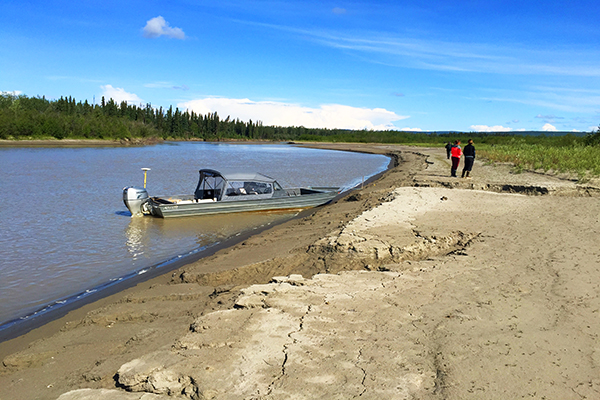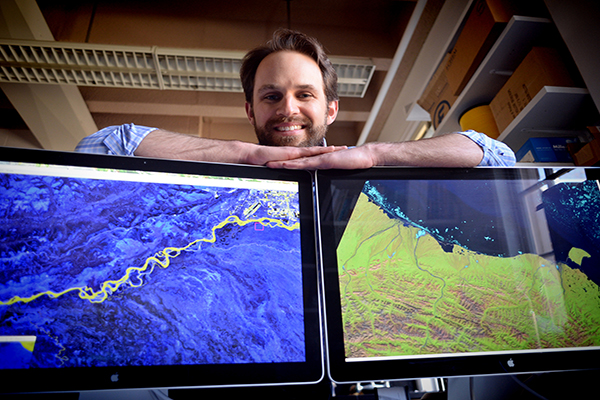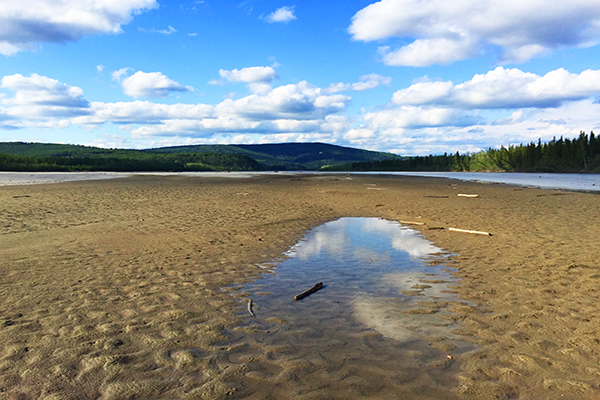Let them think twice before they use their powers
To blot out and drink up and sweep away
These flowery waters and these watery flowers
From snow that melted only yesterday.
Robert Frost, “Spring Pools”
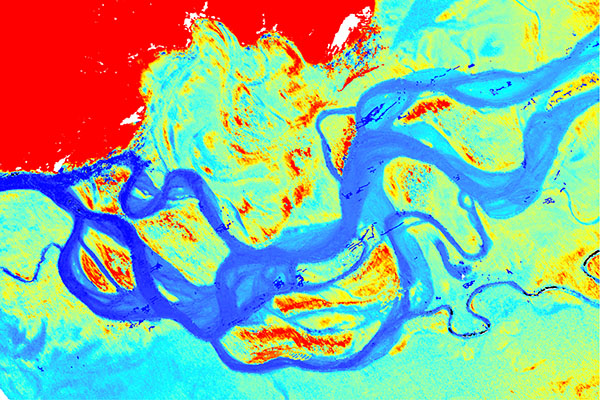
What is global hydrology?
Fresh water in rivers, lakes, wetlands, and mountain snowpacks is a tremendous resource for natural and human systems and, at the same time, represents one of the greatest hazards. Understanding the storage and transport of fresh water through these natural reservoirs and flow paths will help us better address societal challenges in a changing environment. In UNC’s Global Hydrology Lab, we study hydrologic processes at scales from the entire globe to a single large wetland. Our interests are wide-ranging, but we focus on surface water hydrology, satellite remote sensing, hydroclimatology, and climate change. We have particular interests in the hydrology of Arctic and Subarctic regions and in developing new ways to track surface water hydrology from space.”
WHAT’S THE NEWS?
- PhD candidate Julianne Davis poetically accounts her spring trips to Alaska along the Tanana River collecting sediment data during river ice break up. Read here.
- A collaborative group including lab members has published a paper in Water Resources Research explaining how river discharge will be estimated from SWOT.
- New project funded! NASA Coastal Resilience project with U. Virginia and Duke will focus on understanding where, when, and why ghost forests appear on the North American Coastal Plain.
- The SWOT Satellite is launching on December 15th! You can view the launch online at NASA TV. Coverage starts at 6:00 am EST. Check out news stories about SWOT featuring Tamlin here and here.
- The Lake Observations by Citizen Scientists and Satellites (LOCSS) project has received three additional years of funding from NASA. We’ll be working with citizen scientists to measure lake water storage variations through at least 2025!
- A new project has started looking at low-cost, open-source turbidity sensors with collaborators at Oregon State University and the University of Alaska Fairbanks. The Sediment, Ice and Learning on the Tanana (SILT) project includes fieldwork, modeling, electronics design, and K-12 science education!
- PhD students Julianne Davis and Wayana Dolan earned funding from the Geological Society of America to lead an all-women field campaign in Alberta, Canada in July 2022.
- Global Hydrology Lab PhD Student Marissa Dudek was recently awarded a 3-year NASA FINESST fellowship to study gaining and losing streams from space. Congrats Marissa!
- New paper led by lab member Chao Wang focused on using airborne radar imagery to track inundation in North Carolina after Hurricane Florence recently published in WRR.
- Former lab member Xiao Yang and several other current and former lab members have published a paper in Geophysical Research Letters exploring the color of Earth’s lakes and how they may be vulnerable to a changing climate.


